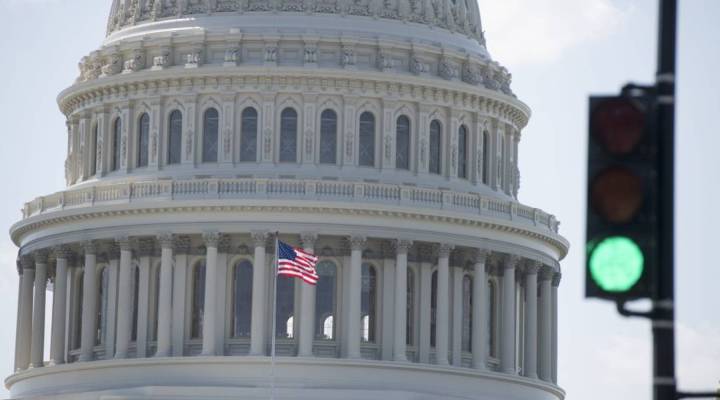
What Democrats and Republicans stand to gain from Congress’ new $1 trillion spending bill
What Democrats and Republicans stand to gain from Congress’ new $1 trillion spending bill

After talk about a possible government shutdown last week, Congress has released a new $1 trillion spending bill that would fund the government until September 30, the end of the current fiscal year.
The deal fails to satisfy several of President Trump’s key priorities. There’s no money for the wall on the U.S.-Mexico border that he’s been calling for since his stint on the campaign trail, and stipulations about blocking new grant funding for sanctuary cities aren’t included.
Congress has to vote on the bill by the end of this week to avoid a government shutdown, and then the president will decide whether to sign it.
Although the plan diverges from Trump’s priorities, both Democrats and Republicans get something out of it.
Here’s a brief look at what each side stands to gain:
For the Republicans
- The GOP gets an additional $15 billion in defense spending, $2.5 billion of which is dependent on the Trump administration’s creation of a new plan to fight ISIS.
- Republicans will also get $1.5 billion set aside for border security. Notably, though, that money has to go toward new technology or repairs on existing infrastructure, like fencing.
- House Republicans also secured funding for a private school vouchers program in Washington D.C. through 2019, according to the Associated Press.
For the Democrats
- There’s $2 billion in new spending for the National Institutes of Health. Trump’s budget blueprint for the 2018 fiscal year called for $5.8 billion in cuts to the facility.
- Democrats have also pushed to help Puerto Rico’s Medicaid program, which will see an additional $295 million in emergency funding. Nearly half of the island’s residents are enrolled in Medicare or Medicaid.
- The bill also avoids defunding Planned Parenthood, which receives about $500 million a year in public funds. (However, services like abortions are excluded from using federal money.)
- One area where there’ll still be cuts: funding for the Environmental Protection Agency, which Democrats have vocalized concerns about. The EPA will see a 1 percent, or about $80 million, reduction of the $8 billion it receives. However, the budget blueprint sought to slash the EPA’s budget by about a third from over $8 billion to $5.7 billion. And there will be funding increases for clean energy and science. The Office of Energy Efficiency and Renewable Energy will see a bump of $17 million from the 2016 fiscal year, and the Department of Energy’s Office of Science will increase by $42 million from the 2016 fiscal year.
| A look at Trump’s budget blueprint |
| The risky business of building Trump’s wall |
| Puerto Rico debt plan calls for austerity, public spending cuts |
There’s a lot happening in the world. Through it all, Marketplace is here for you.
You rely on Marketplace to break down the world’s events and tell you how it affects you in a fact-based, approachable way. We rely on your financial support to keep making that possible.
Your donation today powers the independent journalism that you rely on. For just $5/month, you can help sustain Marketplace so we can keep reporting on the things that matter to you.


















